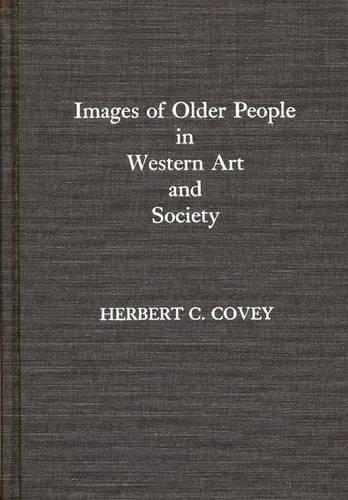
Images of Older People in Western Art and Society
(Hardback)
Publishing Details
Images of Older People in Western Art and Society
Bloomsbury Publishing PLC
Praeger Publishers Inc
30th March 1991
United States
Classifications
Tertiary Education
Non Fiction
700.103
Physical Properties
Hardback
216
Description
How older people have been perceived during various periods of history from the Middle Ages to the 19th century is the focus of this heavily illustrated study of the elderly in Western society. Herbert Covey presents the reader with a wide range of portrayals of the elderly in both art and literature and goes on to analyze, in detail, the images and symbols of aging, sexuality, family, and death found in these depictions. His analyses of the works reflect a variety of disciplines, including fine arts, gerontology, history, sociology, psychology, and literature. This book increases our consciousness of images of older people in Western culture by debunking common images and providing background information on how current images and perceptions have developed. Images of Older People in Western Art and Society illustrates how society has both defined and portrayed advanced age in Western painting, drawing, literature, and drama. First, images of aging are presented. Then, recognizable symbols that have been used throughout history as metaphors for characteristics of aging are shown. Because the elderly are often closely involved with family, one chapter is devoted to images of the elderly within the family structure. Current art often shows the elderly as sexless, but that wasn't always so. Today, death is frequently associated with old age, although throughout history, death has been associated with all ages. Social historians, gerontological practitioners, and sociologists will find a great deal to study in this visual history. The book is illustrated with 41 black-and-white reproductions of paintings and drawings.
Reviews
Covey, a sociologist who has published extensively in the field of gerontology, has relied heavily on his background as a social scientist to present a survey of the visual representation of older people from the late Medieval period through the 19th century. Although there is virtually no art-historical discussion of the works of art included in the book, Covey uses the images as artifacts that give one a wealth of information about how Western culture has viewed the more mature members of various societies. Using historical and literary sources, paintings are treated as yet another form of documentation that the author includes to give the reader greater insight into this subject so relevant to our contemporary world. The lengthy and scholarly bibliography will be helpful to sociologist and art historian alike.-Choice
"Covey, a sociologist who has published extensively in the field of gerontology, has relied heavily on his background as a social scientist to present a survey of the visual representation of older people from the late Medieval period through the 19th century. Although there is virtually no art-historical discussion of the works of art included in the book, Covey uses the images as artifacts that give one a wealth of information about how Western culture has viewed the more mature members of various societies. Using historical and literary sources, paintings are treated as yet another form of documentation that the author includes to give the reader greater insight into this subject so relevant to our contemporary world. The lengthy and scholarly bibliography will be helpful to sociologist and art historian alike."-Choice
Author Bio
HERBERT C. COVEY is a postdoctoral fellow at the Bureau of Sociological Research, University of Colorado-Boulder. He has published widely in academic and professional journals in gerontology and the social sciences.
